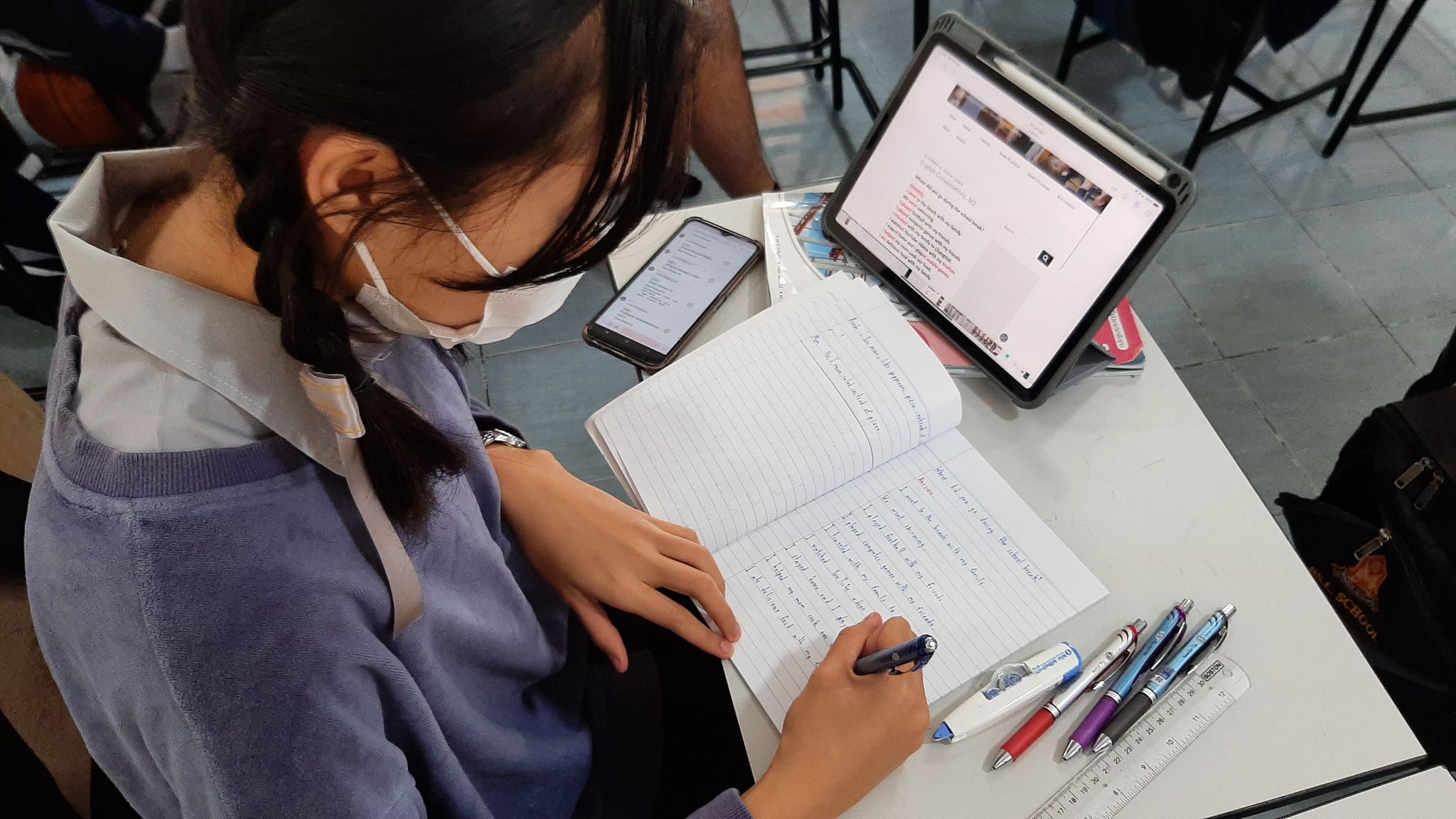Nowadays, students prefer using their tablets/ iPads or mobile phones in the classroom to writing in their notebooks. Let’s look closely at which one is better to use.
Using a tablet for learning provides several benefits over using a paper notebook and pen. Firstly, a tablet allows access to various digital resources, such as e-books, interactive videos, and educational apps. Secondly, it allows for easy note-taking and organization through digital tools such as typing, voice recording, and stylus handwriting recognition. Thirdly, a tablet can reduce the physical clutter and weight of carrying multiple notebooks.

However, using a paper notebook and pen also has its advantages. Firstly, it provides a tangible experience that allows for better retention of information as writing things down helps with memory recall. Secondly, it can reduce distractions since it lacks the notifications and internet access that can be found on tablets. Thirdly, it can promote creativity as it allows for sketching, doodling, and other forms of artistic expression.

Ultimately, the choice between using a tablet or paper notebook and pen depends on personal preference and the learning environment. A hybrid approach that combines the benefits of both may also be beneficial for some learners.
A hybrid approach that combines the use of a tablet and paper notebook can be advantageous for learners who want to leverage the benefits of both digital and analog tools. For example, a student can use a tablet to access digital resources, take notes using a stylus, and organize their notes using digital tools such as folders and tags. They can also use a paper notebook to sketch diagrams, create mind maps, or write down important information that they want to remember.
This hybrid approach can also be useful for learners who need to switch between different contexts or learning environments. For instance, a student can use a tablet for note-taking during lectures, and then use a paper notebook for reflective writing or brainstorming ideas outside the classroom. This approach can also help learners who prefer a more tactile or creative approach to learning, as they can use paper notebooks to express their ideas and thoughts more freely.
However, using a hybrid approach requires careful planning and organization to avoid duplication or confusion. Learners need to develop a system for transferring their notes from paper to digital or vice versa, and ensure that they can access their notes from both devices when they need them. They also need to be aware of the limitations of each tool, such as battery life, connectivity, and storage space, and plan accordingly.
In conclusion, using a hybrid approach that combines the use of a tablet and paper notebook can provide learners with the best of both worlds, allowing them to leverage the benefits of digital and analog tools for more effective and efficient learning.
